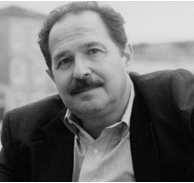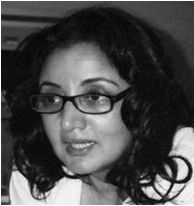The Seventh HARVEY DAVID PREISLER Memorial Symposium
Saturday, May 16, 2009
9:00 a.m. to 12:00 p.m.
The New York Academy of Sciences
7 World Trade Center
250 Greenwich Street, 40th Floor
New York, NY: 10007
RSVP: In the comments to this post. Seating is limited to the first 100 people who respond.
This invitation to 3 Quarks Daily readers is presented, as always, through the courtesy of my sister Azra in memory of her late husband Harvey David Preisler. As some of you know, the first six speakers at this symposium have all been eminent scientists, including Robert Gallo, Steven Wolfram, medicine Nobel laureate Craig Mello, and last year, Richard Dawkins. This year, we are privileged to have as a speaker Dr. Ilham Saleh Abuljadayel, whose work on retrodifferentiation of cells into pluripotent stem cells may well revolutionize medicine as we know it. I suspect that you will be hearing much more about her in the mainstream press very soon. If you are (or can be) in New York City at the time, I urge you not to miss this event!
9:00 a.m: Reception
9:30 a.m: Welcome of guests and tribute to Harvey Preisler by Sheherzad Raza Preisler
9:45 a.m: Introduction of Dr. Ilham Saleh Abuljadayel by Azra Raza
10:00 a.m: Dr. Ilham Saleh Abuljadayel
Title of Lecture: Human pluripotential stem cells via retrodifferentiation
11:00 a.m: Questions and Discussion
 Dr. Harvey David Preisler: Director of Rush Cancer Institute and the Samuel G. Taylor III Professor of Medicine at Rush University, Chicago, died on May 19th 2002. The cause of death was lymphoma. Dr. Preisler grew up in Brooklyn, New York, and obtained his medical degree from the University of Rochester, NY in 1965. He trained in Medicine at New York Hospitals, Cornell Medical Center, and in Medical Oncology at the National Cancer Institute and Columbia Presbyterian Hospital in NYC. He then joined Mount Sinai hospital in NY, and subsequently moved to Roswell Park Cancer Institute in Buffalo, NY to direct the Leukemia Service there for the next 14 years. Dr. Preisler was recruited to Rush University as Director of the Cancer Institute in 1992. At the time of his death, he was the Principal Investigator of a ten million dollar grant from the National Cancer Institute in addition to several other large grants which funded his independent research laboratory with approximately 25 scientists. He published extensively including more than 350 full-length papers in peer reviewed journals, 50 books and/or book chapters and approximately 400 abstracts. He was married to Azra Raza, M.D.
Dr. Harvey David Preisler: Director of Rush Cancer Institute and the Samuel G. Taylor III Professor of Medicine at Rush University, Chicago, died on May 19th 2002. The cause of death was lymphoma. Dr. Preisler grew up in Brooklyn, New York, and obtained his medical degree from the University of Rochester, NY in 1965. He trained in Medicine at New York Hospitals, Cornell Medical Center, and in Medical Oncology at the National Cancer Institute and Columbia Presbyterian Hospital in NYC. He then joined Mount Sinai hospital in NY, and subsequently moved to Roswell Park Cancer Institute in Buffalo, NY to direct the Leukemia Service there for the next 14 years. Dr. Preisler was recruited to Rush University as Director of the Cancer Institute in 1992. At the time of his death, he was the Principal Investigator of a ten million dollar grant from the National Cancer Institute in addition to several other large grants which funded his independent research laboratory with approximately 25 scientists. He published extensively including more than 350 full-length papers in peer reviewed journals, 50 books and/or book chapters and approximately 400 abstracts. He was married to Azra Raza, M.D.
Tribute to Harvey by Azra: http://3quarksdaily.blogs.com/3quarksdaily/2006/05/rx_harvey_david.html
 Dr. Ilham Saleh Abuljadayel: was born in Jeddah, Saudi Arabia, and obtained her doctorate and post doctoral fellowship in Immunology at Kings College, London University (1986-1990). She discovered the process of retrodifferentiation in the early nineties. This direct reprogramming of differentiated somatic cells is achieved through cell surface receptor contact of more mature adult human cells such as leucocytes. She was awarded worldwide patents on the methodology and device, enabling the production of unprecedented levels of pluripotent stem cells from differentiated cells. Based on her research, Dr. Abuljadayel co-founded the TriStem Group. During the period 1990 to 1995, Dr Abuljadayel worked as a consultant immunologist at the King Fahd Armed Forces Hospital in Jeddah, and from 1996-2000 headed the TriStem Research on retrodifferentiation at the London Hospital, Kings College, Downing College University of Cambridge and Addenbrooke Hospital. In 2000 Dr Abuljadayel performed the first preclinical study on the functional utility of the autologous retrodifferentiated stem cells in collaboration with the George Washington Medical centre, USA, in two animal models of human diseases. From 2003 to 2005 Dr Abuljadayel in a clinical human trial, applied the autologous retrodifferentiated stem cell therapy in aplastic anemia and beta thalassemia-major in collaboration with the Indian Council of Medical Research and the Pakistan Medical Research Council, respectively. She currently resides in the UK and remains the head of research for clinical application of the autologous retrodifferentiated stem cell therapy in hematological and degenerative diseases including rejuvenation.
Dr. Ilham Saleh Abuljadayel: was born in Jeddah, Saudi Arabia, and obtained her doctorate and post doctoral fellowship in Immunology at Kings College, London University (1986-1990). She discovered the process of retrodifferentiation in the early nineties. This direct reprogramming of differentiated somatic cells is achieved through cell surface receptor contact of more mature adult human cells such as leucocytes. She was awarded worldwide patents on the methodology and device, enabling the production of unprecedented levels of pluripotent stem cells from differentiated cells. Based on her research, Dr. Abuljadayel co-founded the TriStem Group. During the period 1990 to 1995, Dr Abuljadayel worked as a consultant immunologist at the King Fahd Armed Forces Hospital in Jeddah, and from 1996-2000 headed the TriStem Research on retrodifferentiation at the London Hospital, Kings College, Downing College University of Cambridge and Addenbrooke Hospital. In 2000 Dr Abuljadayel performed the first preclinical study on the functional utility of the autologous retrodifferentiated stem cells in collaboration with the George Washington Medical centre, USA, in two animal models of human diseases. From 2003 to 2005 Dr Abuljadayel in a clinical human trial, applied the autologous retrodifferentiated stem cell therapy in aplastic anemia and beta thalassemia-major in collaboration with the Indian Council of Medical Research and the Pakistan Medical Research Council, respectively. She currently resides in the UK and remains the head of research for clinical application of the autologous retrodifferentiated stem cell therapy in hematological and degenerative diseases including rejuvenation.
The cellphone grows more wondrous and indispensable to us every day. Talking is the least of it. We text and Tweet our heads off, send photos, watch TV shows, play video games. But in Japan, imperium of the future where all the above is old hat, the keitai (cellphone) has further spawned a wildly successful, populist fiction genre. Keitai shosetsu, the so-called cellphone novel, has been touted (in the pages of the New Yorker, among other places) and reviled (by Japanese literati) as the first narrative mode of the txt msg age — the herald of a written-word future bent by wireless telecom's powers.
